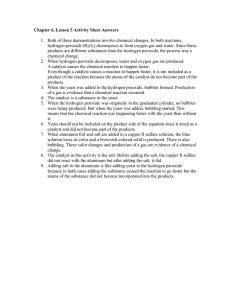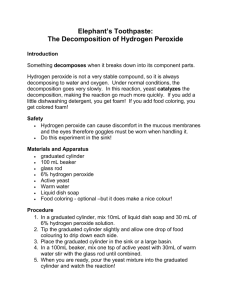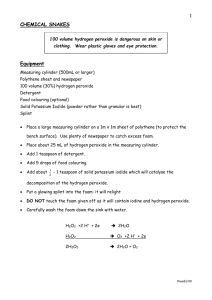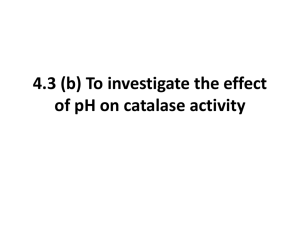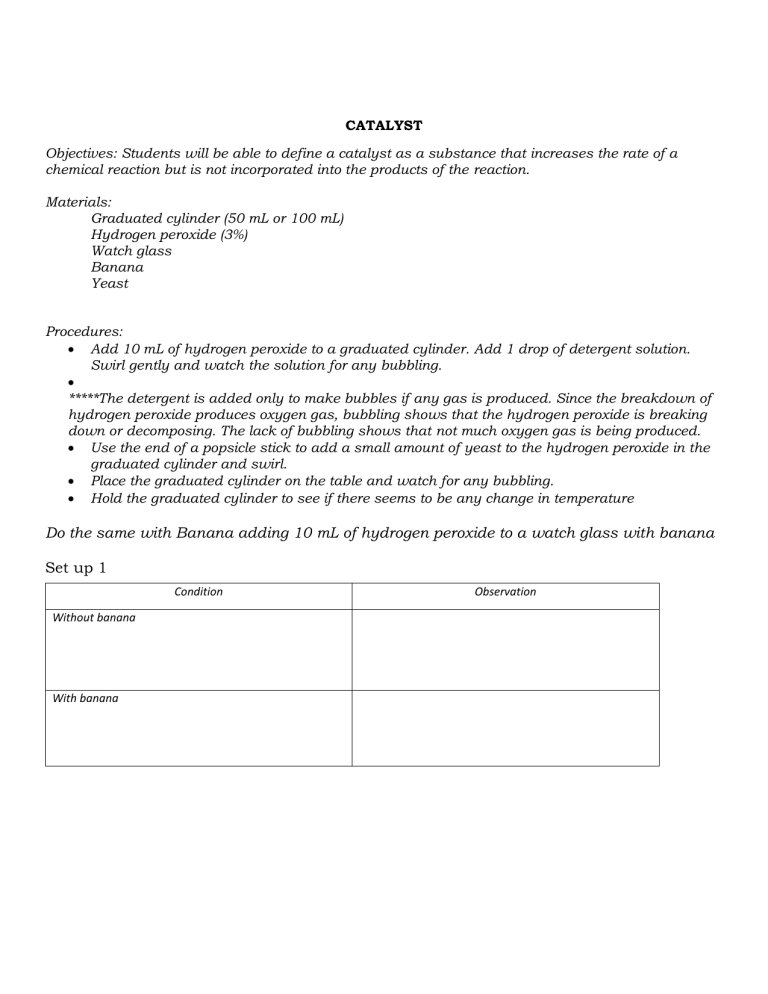
CATALYST Objectives: Students will be able to define a catalyst as a substance that increases the rate of a chemical reaction but is not incorporated into the products of the reaction. Materials: Graduated cylinder (50 mL or 100 mL) Hydrogen peroxide (3%) Watch glass Banana Yeast Procedures: Add 10 mL of hydrogen peroxide to a graduated cylinder. Add 1 drop of detergent solution. Swirl gently and watch the solution for any bubbling. *****The detergent is added only to make bubbles if any gas is produced. Since the breakdown of hydrogen peroxide produces oxygen gas, bubbling shows that the hydrogen peroxide is breaking down or decomposing. The lack of bubbling shows that not much oxygen gas is being produced. Use the end of a popsicle stick to add a small amount of yeast to the hydrogen peroxide in the graduated cylinder and swirl. Place the graduated cylinder on the table and watch for any bubbling. Hold the graduated cylinder to see if there seems to be any change in temperature Do the same with Banana adding 10 mL of hydrogen peroxide to a watch glass with banana Set up 1 Condition Without banana With banana Observation Set up 2 Condition Observation Without yeast With yeast Guide Questions: 1. What clues did you have that a chemical reaction occurred in this activity? 2. What is the catalyst in this activity? 3. What evidence do you have that hydrogen peroxide decomposed faster when you added yeast? 4. When you write the chemical equation for this reaction, should yeast be included on the product side of the chemical equation? Conclusions:

